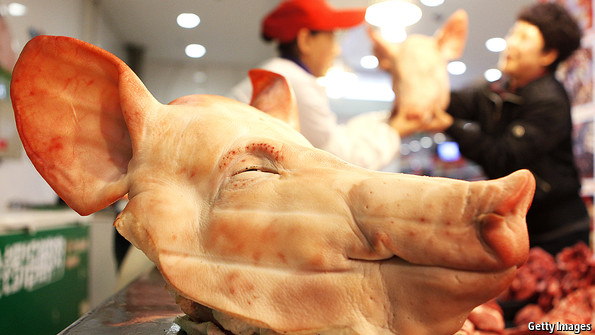Each kilogram of pork requires 6kg of feed, usually processed soy or corn. Given the scarcity of water and land in China, it cannot feed its pigs as well as its people. Therefore, Chinese swine increasingly rely on imported feed.
The International Institute of Social Studies in the Hague reckons that “more than half of the world’s feed crops will soon be eaten by Chinese pigs. Already in 2010 China’s soy imports accounted for more than 50% of the total global soy market.”
“As a result, land use is changing drastically on the other side of the world. In Brazil, more than 25m hectares of land—parts of which were once Amazon rainforest—are being used to cultivate soy (Chinese companies have not signed up to the “soy roundtable”, a voluntary association, the members of which agree not to buy soyabeans from newly deforested land). Entire species of plants and trees are being sacrificed to fatten China’s pigs. Argentina has chopped down thousands of hectares of forest and shifted its traditional cattle-breeding to remote areas to make way for soyabeans. Since 1990 the Argentine acreage given over to that crop has quadrupled: the country exports almost all of its whole soyabeans—around 8m tonnes—to China. In some areas farmers harvest two or three crops a year, using herbicides that have been linked to birth defects and increased cancer rates.”
There are other impacts: the rampant use of antibiotics; emission of greenhouse gases; billions of tons of waste that are one of the largest sources of soil and water pollution in China.
Thanks to the Economist for the detailed analysis. Link to article.

